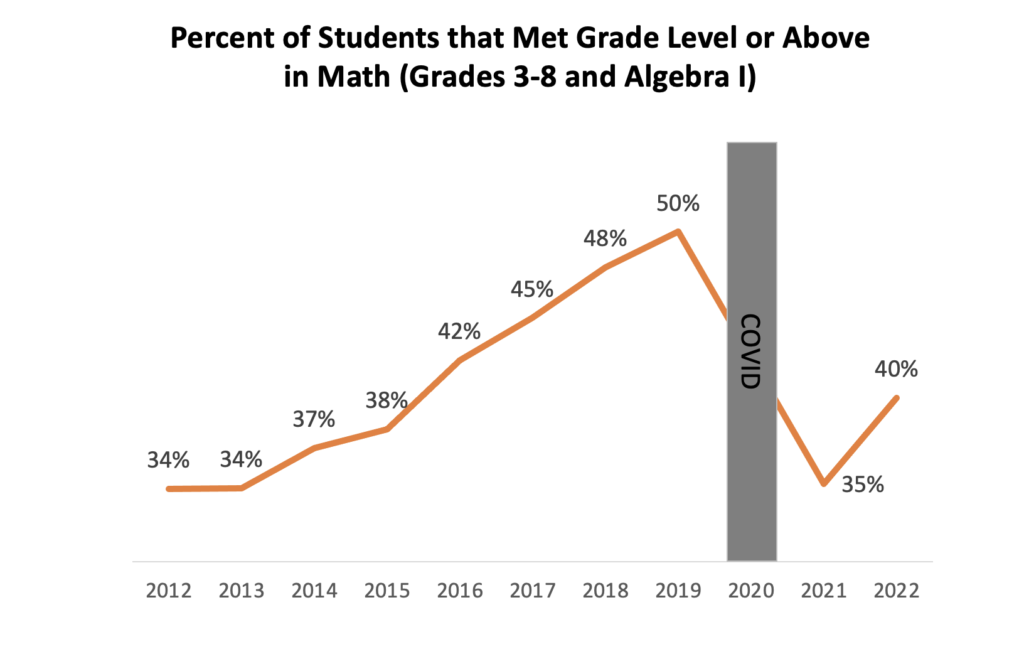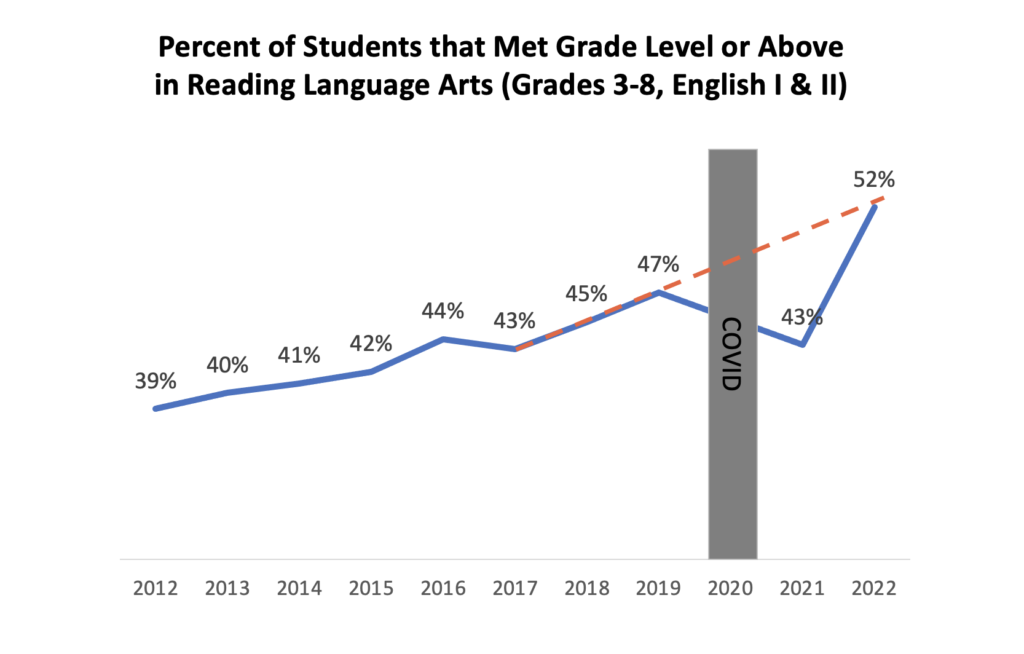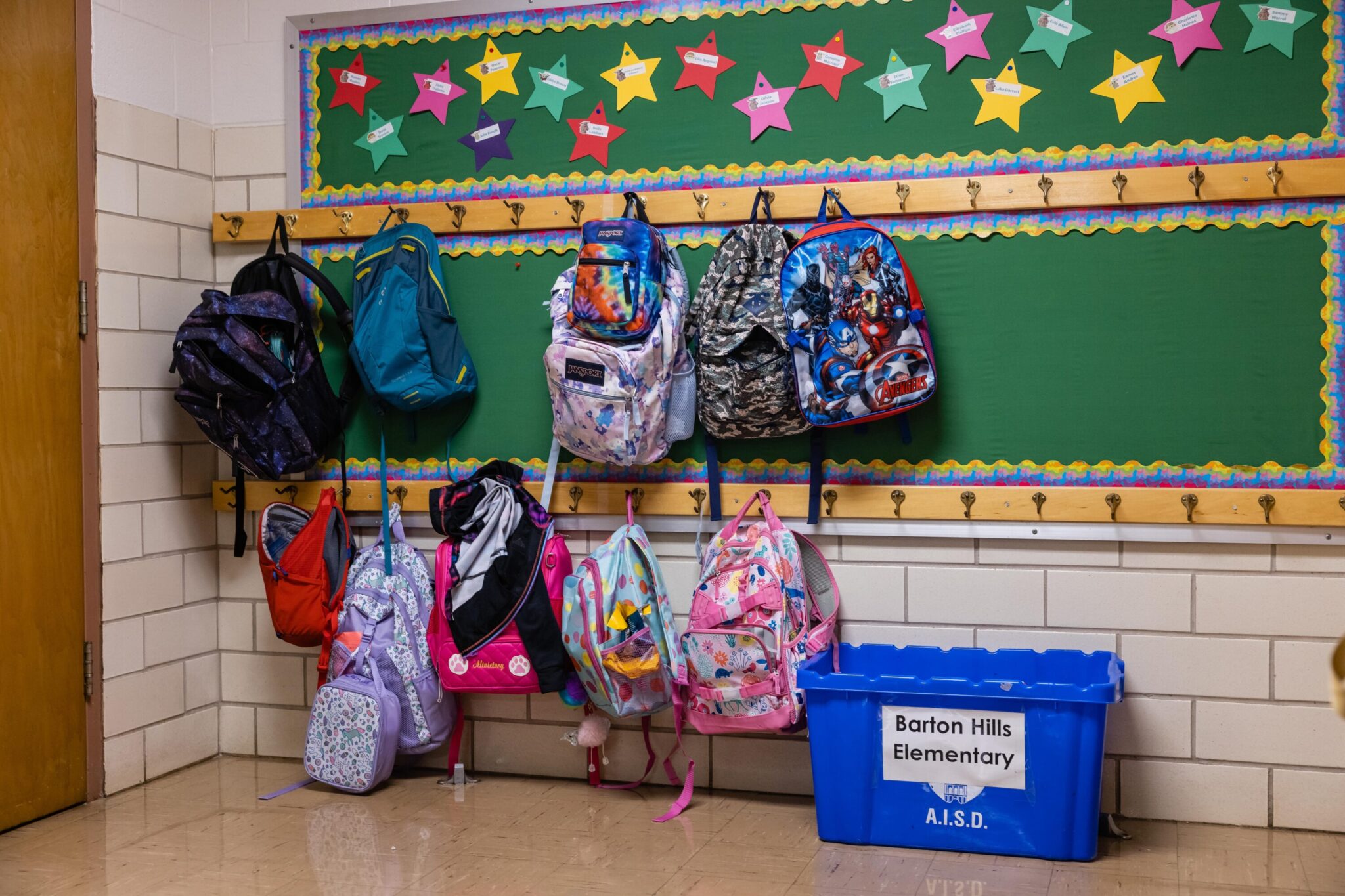From KUT:
Texas education officials say they are encouraged by standardized test results in grades 3-8 even though there is still evidence of pandemic-related learning loss.
The Texas Education Agency released the results of the STAAR tests for elementary and middle school students on Friday, about two weeks after results for high school students were released.
The agency said participation in STAAR exams — the State of Texas Assessment of Academic Readiness — rebounded in 2022 after dropping last year. This year, 98% of students participated, with nearly 90% taking STAAR tests online. Only 87% of students participated in 2021. The year before, STAAR was canceled.
TEA Commissioner Mike Morath said during a media briefing that the results of the STAAR test can help families and educators identify additional help individual students may need. “Let’s see how well we did as a state, especially coming out of the impacts of COVID-19 academically on students,” he said.
While student performance in math has not yet returned to pre-pandemic levels, Morath said elementary and middle school students made significant gains in 2022. “This is really an improvement for all kids,” he said. “Kids at the top of the proficiency spectrum and kids at the bottom of the proficiency spectrum.”
In 2019, 50% of students in grades 3-8 met or exceeded grade-level proficiency. That dropped to 35% in 2021, before increasing to 40% this year. When looking at each grade level, all saw improvement when compared to last year. Third graders saw the most improvement with 41% meeting grade level in math in 2022. In 2021, that figure was 29%.
Despite the gains, Morath said there is still work to do. “We do have quite a ways to go to get back to our former level of student performance and proficiency in math,” he said.
 In contrast to math, the commissioner said reading scores are in line with what the state was projecting even before the pandemic.
In contrast to math, the commissioner said reading scores are in line with what the state was projecting even before the pandemic.
“In reading, in particular, we have been engaged as a state in a very large effort to improve reading for students,” he said. “It is clear that those state policy efforts are paying real dividends.”
More than half of the students in grades 3-8 met or exceeded grade level in reading, up from 47% in 2019 and 43% in 2021. When looking at the data, broken down by grade, the percentage of students meeting grade level in reading increased by at least 10 points from 2021 to 2022. Fourth graders saw the biggest jump between those years with the percentage of students meeting grade level increasing by 17%.
 The 2022 STAAR results also show the achievement gap persisted for economically disadvantaged students. Forty-one percent were at grade level or above for reading, while just 30% met that level in math. In contrast, more than two-thirds of non-economically disadvantaged students met grade level for reading and 55% hit that milestone in math.
The 2022 STAAR results also show the achievement gap persisted for economically disadvantaged students. Forty-one percent were at grade level or above for reading, while just 30% met that level in math. In contrast, more than two-thirds of non-economically disadvantaged students met grade level for reading and 55% hit that milestone in math.
Students learning English, known in Texas as emergent bilingual students, made significant gains in reading proficiency. Thirty-one percent met or exceeded grade level in 2022, up 11% from last year.
“You’ll notice, again, a big impact of the pandemic on those students — especially mathematics — but fairly robust gains,” Morath said.
Across race and ethnicity, a higher percentage of Asian, African American, Hispanic and white students met or exceeded grade level in 2022 than they did before the pandemic in 2019. On the flip side, all demographic groups saw the percentage of students meeting or exceeding grade level in math fall this year when compared with 2019, but scores were up from last year.
Morath credited a law passed in 2021, House Bill 4545, with some of the improvements. It requires students who do not pass STAAR to either receive intensive tutoring or to be assigned to a classroom with a certified master, exemplary or recognized teacher.
He said while Texas has historically struggled to help students move from below-grade level to meets-grade level, that appears to be changing in the wake of this legislation. He points to data that shows in 2018-2019, 32% of kids who were below grade level accelerated to “approaches” grade level in reading. After the implementation of HB 4545 before the 2021-2022 school year, 45% of kids who were below grade level in reading jumped up to approaches grade level.
“That is a very significant change,” Morath said, “and that is strong preliminary evidence that the policy framework of House Bill 4545 is working.”
Students in grades 3-8 who do not pass the STAAR exam do not need to repeat a grade. Texas schools will be rated on STAAR scores this year for the first time since the pandemic began. Districts and schools that receive a D or F will be labeled “Not Rated,” instead of receiving a grade.
Families can also see how their kids did on the STAAR test and what questions they were asked by visiting TexasAssessment.gov.
















